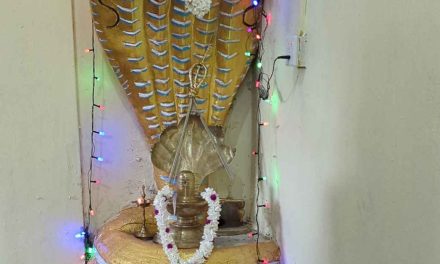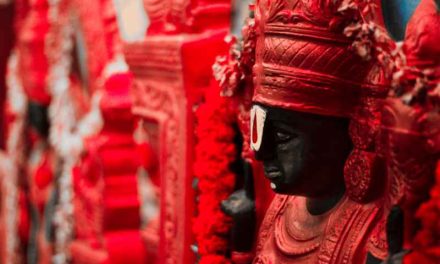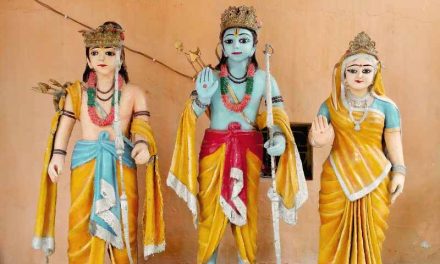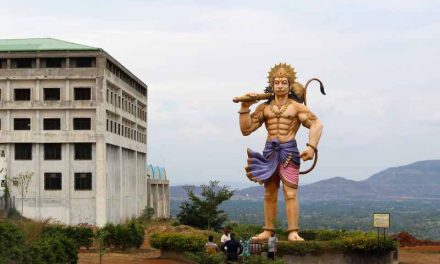As a lifelong student of Hindu philosophy and spirituality, I often find myself diving into ancient texts to uncover their wisdom and relevance in my life. Recently, I found myself captivated by the Nrsimhatapini Upanishad. This Upanishad is not as widely known as some others, but its teachings have deeply resonated with me, and I want to share my reflections and experiences with you.
The Nrsimhatapini Upanishad is a profound text centered around Lord Nrsimha, a fierce and protective form of Vishnu. Lord Nrsimha is known for his unique half-lion, half-human form, which symbolizes the power and protection of the divine. This Upanishad explores themes of devotion, protection, and the ultimate knowledge that leads to liberation.
My journey with the Nrsimhatapini Upanishad began during a challenging time in my life. I was feeling overwhelmed by the pressures of work and personal responsibilities. It was during this period of stress and confusion that I turned to meditation and the study of sacred texts for solace. A friend recommended the Nrsimhatapini Upanishad, and as I began to read it, I felt a sense of peace and clarity that had been missing from my life.
The Upanishad is divided into several sections, each rich with symbolism and meaning. One of the first things that struck me was the story of Lord Nrsimha’s manifestation. In the legend, the demon king Hiranyakashipu, who could not be killed by man or beast, sought to defy the gods. His son, Prahlada, however, was a devout follower of Vishnu. Despite his father’s attempts to sway him, Prahlada remained steadfast in his devotion. When Hiranyakashipu tried to kill Prahlada, Lord Nrsimha appeared from a pillar, embodying both man and beast, to protect him and destroy the demon king.
This story reminded me of the power of unwavering faith and devotion. In my own life, I realized that during my most difficult times, it was my faith and spiritual practices that provided me with strength and guidance. The image of Lord Nrsimha emerging to protect his devotee resonated with me deeply, symbolizing the protective power of divine love and the importance of maintaining faith even in the face of adversity.
As I delved deeper into the Upanishad, I encountered its teachings on meditation and the nature of the self. The text emphasizes the importance of knowing one’s true self, which is beyond the physical body and mind. This concept, known as Atman, is the eternal, unchanging essence within each of us. According to the Upanishad, realizing this true self is the key to liberation and freedom from the cycle of birth and death.
In my meditation practice, I began to focus on this idea of the Atman. I would sit quietly, breathe deeply, and visualize the presence of Lord Nrsimha within my heart, protecting and guiding me. This visualization helped me feel a deep sense of connection to the divine and reminded me that my true self is beyond any temporary struggles or challenges I might face.
One particular verse from the Nrsimhatapini Upanishad that I found particularly powerful states, “He who meditates on the supreme Nrsimha with a pure heart, overcoming all fears and desires, attains the eternal abode of Vishnu.” This verse became a mantra for me, a reminder that through meditation and devotion, I could overcome my fears and connect with the divine presence within me.
As I continued to meditate and study the Upanishad, I found that my perspective on life began to shift. I started to see my challenges not as obstacles, but as opportunities for growth and deeper spiritual understanding. The teachings of the Nrsimhatapini Upanishad encouraged me to look beyond the surface of my experiences and recognize the deeper spiritual lessons they offered.
One of the most significant changes I experienced was a sense of inner peace and confidence. The protective image of Lord Nrsimha, combined with the understanding of my true self as the Atman, gave me the strength to face my fears and uncertainties with a calm and steady heart. I began to approach my daily life with a sense of grace and resilience, knowing that I was supported by the divine presence within me.
In sharing my reflections on the Nrsimhatapini Upanishad, I hope to inspire others to explore this profound text and its teachings. The Upanishad offers a wealth of spiritual wisdom that can help us navigate the challenges of life with faith, courage, and a deep sense of inner peace. Whether you are new to meditation and spiritual study or a seasoned practitioner, the Nrsimhatapini Upanishad has something to offer.
In conclusion, my journey with the Nrsimhatapini Upanishad has been one of transformation and growth. It has taught me the importance of unwavering faith, the power of meditation, and the significance of knowing one’s true self. As I continue to reflect on its teachings, I am reminded that the divine presence is always within us, ready to protect and guide us on our spiritual path. May we all find the strength and wisdom to connect with our true selves and embrace the protective power of the divine in our lives.





